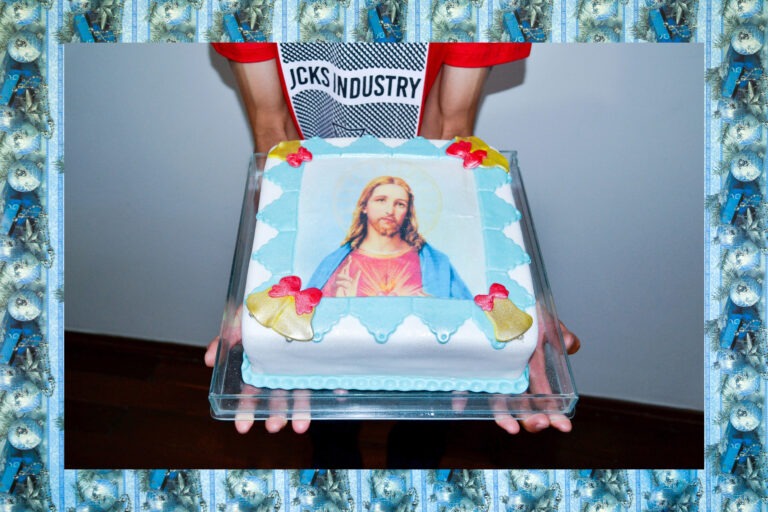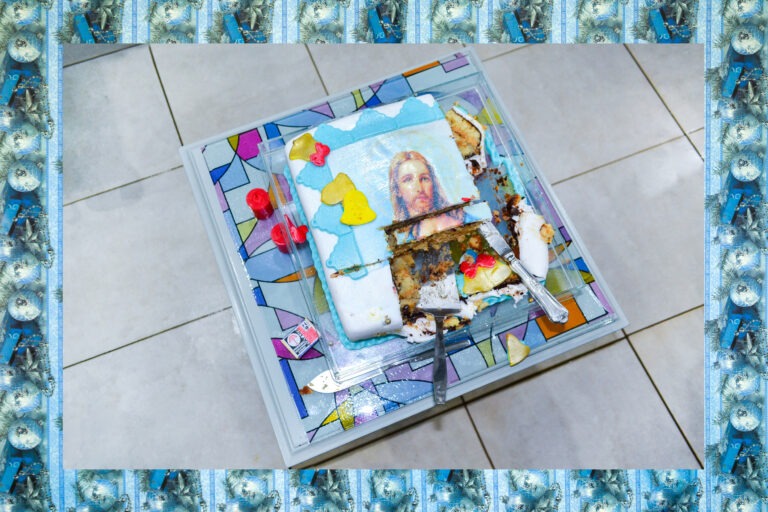Rafael Adorján, 2021.
My Aunt's Christmas, Photography, Diptych, 13 x18cm (each).


Collectors love works of art. This love often extends to an artist’s work as a whole. By the way he moves through the world, how he interprets it, his works, his studio, etc. This is the case of artist RAFAEL ADORJÁN with the CALMON-STOCK COLLECTION. The delicate way in which the artist treats themes dear to his universe, translated into a Proustian work, in the richness of the details evoked and in the involuntary memory treated as perception/photography, is impressive. The entire set of ADORJÁN's photographs is characterized by a “madeleine” quality – paradoxically, also with a nonchalance for lost time. This is the case in the series Religare, Hi-fi – which is in the MAM COLLECTION -, Desdidactica and more recently in the project O Natal da minha Tia, a photo-book that we had the honor of following and supporting, launched last December in Rio de Janeiro and in São Paulo, simultaneously.
In the photo-book, RAFAEL ADORJÁN brings together a document at once affectionate and Sibylline from his family's party in December 2020, in the middle of the pandemic. The host is Tia Maristela, who brings together the Tindó-Adorjan family in a carefully planned event. In his critical text, curator Raphael Fonseca says that “the photographs gathered here, the edition and the graphic design of this publication make up an incomplete album”, inviting us to imagine the intricacies of the Adorján Christmas, but also of our own Christmases, when we celebrate with our families the birth of Christ and the arrival of Santa Claus.
From the series, we chose two moments of a Jesus 'wrapped for Christmas': the one in which the Messiah appears as a figure on the Christmas cake (certainly a detail carefully planned by Maristela), and the later moment, when the Prophet appears “cannibalized ”, at the end of the religious festival. With his sharp photographic eye, ADORJÁN exposes his memories as contemporary teaching of the current Brazilian moment. With everything included: pandemic, problems, joys, hopes, etc.
The artist's series also brings to mind the article “Prenome de Benjamin”, by Jacques Derrida, in which the master of deconstruction comments on the developments of “For a Critique of Violence”, a prophetic post-war text by Walter Benjamin (1921 ). Of the Derridean considerations about the emblematic text, the most relevant is that Benjamin considers EDUCATION to be “divine violence”. For Benjamin, EDUCATION escapes what he calls the strict circumscription of the task of a critique of violence: that of the earthly field of justice and law. In effect, for Benjamin, EDUCATION, instruction – language, in short – is a divine violence in the manner of destiny: “exterminating”, “non-bloody”, “expiating guilt”, because by being able to provide an interruption of the usual norms for reading phenomena, opens a path for the new, for the revolutionary – for good and for bad, by the way. The evil, which perhaps Benjamin had foreseen so far in advance, would be the premature foreboding of an atmosphere then conducive to National Socialist “education”. Anyone who has experienced Bolsonarism, Olavism, Lavajatismo and the entire environment of the Brazilian extreme right in the last 7, 8 years knows what we are talking about.
The quick quote to Benjamin (we ask the reader to face the 1921 text) and perhaps incomplete, aims to highlight that art also plays an EDUCATIONAL role. In this sense, we consider that RAFAEL ADORJÁN creates, in the set of his photographs – among other qualities – a language with the divine properties that Benjamin refers to, in his revolutionary, transformative role.
The photobook “My Aunt’s Christmas” is for sale on the artist’s website.